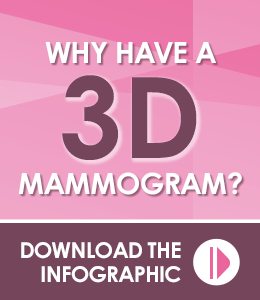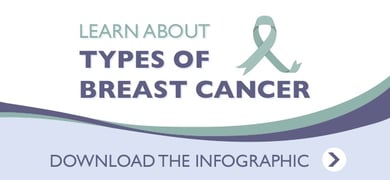 Since 2017, Iowa law has required mammography providers to include information about breast density in mammography reports. You may have questions about what this information means for you, your health, and the effectiveness of your breast cancer screening.
Since 2017, Iowa law has required mammography providers to include information about breast density in mammography reports. You may have questions about what this information means for you, your health, and the effectiveness of your breast cancer screening.
What is breast density?
Breast density refers to the relative amounts of fatty vs. glandular and fibrous tissue in the breasts. Dense breasts contain more fibroglandular tissue, and nondense breasts contain higher proportions of fat. Your mammography report will categorize the density of your breasts in one of four ways:
- Almost entirely fatty tissue
- Scattered areas of dense tissue
- Heterogeneously dense
- Extremely dense
It’s estimated that 50% of women have breasts that are heterogeneously or extremely dense. Women who are younger, have less overall body fat, or who use hormone replacement therapy in menopause are more likely to have dense breasts, but they can occur in women of any age or body composition.
Why do I need to know whether my breasts are dense?
It’s important to understand your breast density because dense breast tissue not only is associated with an elevated risk of breast cancer but also makes cancer more difficult to see on a mammogram. How much of an increased cancer risk accompanies dense breasts is currently not well understood. The effect of breast density on cancer screening, however, is clear.
On a mammogram, fat appears relatively clear, and fibroglandular tissue appears white. Because tumors also appear white on mammography images, they can easily be obscured by dense tissue, resulting in delayed detection. A recent study of more than 100,000 women found that interval cancers—those detected between screenings—were more than twice as prevalent among women with dense breasts than those with nondense breasts.[1]
Are there more effective ways to detect cancer early in dense breasts?
Fortunately, modern breast cancer screening technologies provide new ways to find breast cancer earlier in women with dense breasts.
3-D Mammography
Breast tomosynthesis, better known as a 3-D mammogram, has been shown to provide more effective early detection of breast cancer in women of all breast densities, with the greatest gains for women with heterogeneously dense breasts.[2] Unlike a traditional mammogram, which typically uses just two images of each breast (one vertical and one horizontal), tomosynthesis uses multiple images, taken as the machine moves in an arc over each breast. These images are combined using computer software to create a three-dimensional image that the radiologist can examine in detail, making it easier to find abnormalities that can be obscured by surrounding tissue.
Abbreviated Breast MRI
Until recently, breast MRI was reserved primarily for women who have been identified as having a high lifetime risk of developing breast cancer. (Calculate your lifetime breast cancer risk here.) MRI is recommended for women at a high risk of breast cancer because of its ability to detect signs of cancer that can easily be missed on a mammogram. A recent study of more than 2,000 women found that MRI detected an additional 15.5 cancers (2/3 of which were invasive cancers) per 1,000 women with normal mammography results.[3]
Abbreviated breast MRI is a new screening technology that makes the high sensitivity of MRI available to women at average risk of breast cancer. While the abbreviated protocol uses shorter exam and interpretation times, it has been found to have sensitivity comparable to that of traditional breast MRI.[4] MRI does not use ionizing radiation. The exam does, however, use gadolinium contrast to create the most accurate images possible. If you’re considering any type of MRI, be sure to discuss all risks and contraindications with your doctor.
Iowa Radiology strives to provide the most accurate, state-of-the-art imaging available as part of our commitment to excellent patient care. For more information about breast cancer screening, access our free resources below.
Sources
[1] Moshina, N, Sebuødegård S, Lee CI, et al. Automated Volumetric Analysis of Mammographic Density in a Screening Setting: Worse Outcomes for Women with Dense Breasts. Radiology. 2018 Aug;288(2):343-352. http://dx.doi.org/10.1148/radiol.2018172972. Accessed December 26, 2019.
[2] Rafferty EA, Durand MA, Conant EF, et al. Breast Cancer Screening Using Tomosynthesis and Digital Mammography in Dense and Nondense Breasts. JAMA. 2016;315(16):1784-1786. http://dx.doi.org/10.1001/jama.2016.1708. Accessed December 26, 2019.
[3] Kuhl CK, Strobel K, Bieling H et al. Supplemental Breast MR Imaging Screening of Women with Average Risk of Breast Cancer. Radiology, 2017;283(2):361–370. http://dx.doi.org/10.1148/radiol.2016161444. Accessed December 27, 2019.
[4] Mann, van Zelst, et al. Is Ultrafast or Abbreviated Breast MRI Ready for Prime Time? Current Breast Cancer Reports, 2019;11( 1): 9–16. http://dx.doi.org/10.1007/s12609-019-0300-8. Accessed December 27, 2019.






